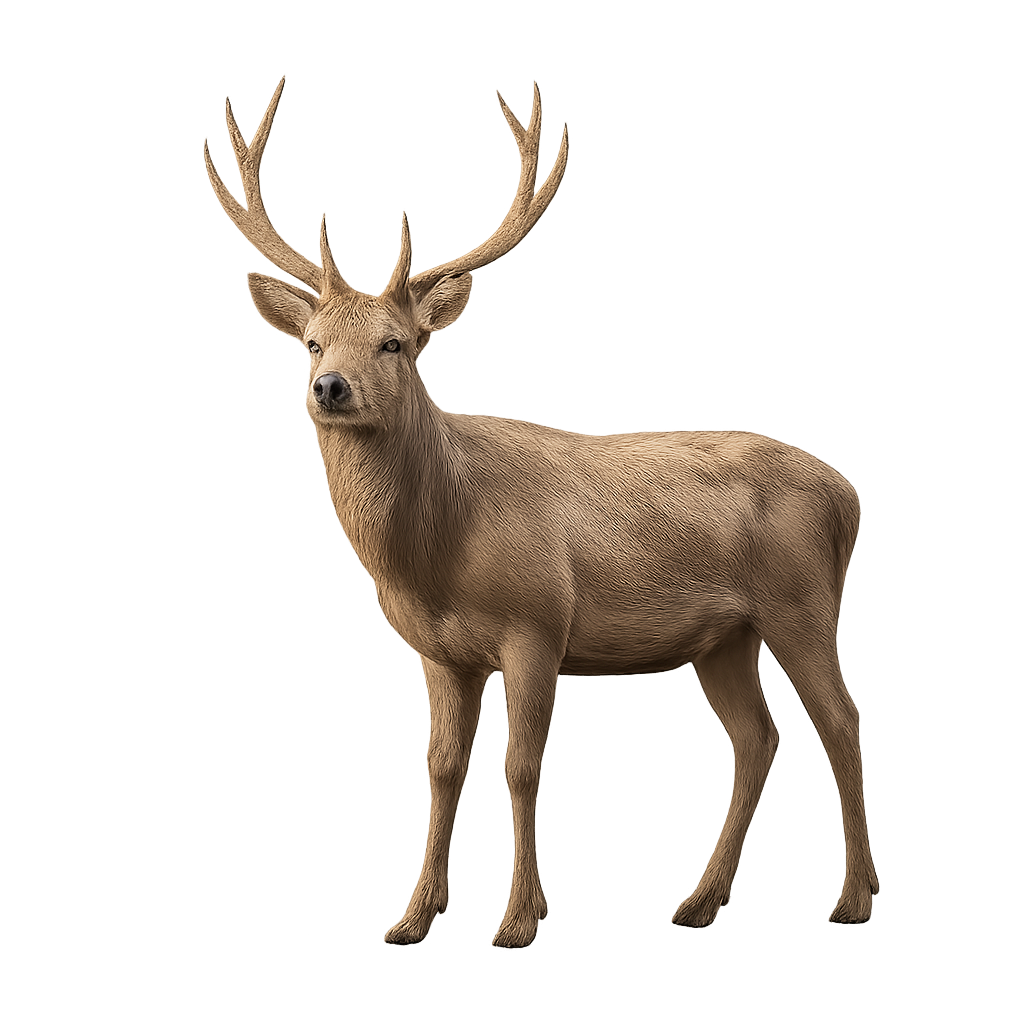Your wildlife photography guide.
Explore the central asian red deer in detail, study its behavior, prepare your shots.
Where to observe and photograph the central asian red deer in the wild
Learn where and when to spot the central asian red deer in the wild, how to identify the species based on distinctive features, and what natural environments it inhabits. The WildlifePhotographer app offers tailored photography tips that reflect the central asian red deer’s behavior, helping you capture better wildlife images. Explore the full species profile for key information including description, habitat, active periods, and approach techniques.
Central Asian Red Deer
Scientific name: Cervus hanglu

IUCN Status: Vulnerable
Family: CERVIDAE
Group: Mammals
Sensitivity to human approach: Shy
Minimum approach distance: 60 m
Rut period: September to October
Gestation: 240-250 jours
Births: May to June
Habitat:
Mountain forests and meadows
Activity period :
Active at dawn and dusk, ideal moments for observation.
Identification and description:
The Kashmir Stag, also known as the Hangul, is a majestic species primarily found in the mountains of the Himalayas and Kashmir. This deer is easily recognizable by its dense, woolly coat, which helps it withstand the cold temperatures of high altitudes. It has impressive antlers, which can grow to a considerable size in adult males. The females, on the other hand, are generally smaller and do not have antlers.
This deer inhabits high-altitude forests, alpine meadows, and mountainous regions covered in snow. It feeds primarily on herbaceous vegetation, foliage, and young shoots. The Kashmir Stag is a relatively shy and discreet animal, often living in small groups or family units. While its population remains relatively stable, it faces threats such as habitat loss due to deforestation and poaching, especially for its antlers.
Recommended lens:
300 mm – adjust based on distance, desired framing (portrait or habitat), and approach conditions.
Photography tips:
Approach slowly and discreetly, using a telephoto lens to capture images from a distance, as the Kashmir stag is a large and somewhat shy deer that can easily move away if it feels threatened.
Photograph early in the morning or late in the afternoon, when the light is soft and the Kashmir stag is more active, often feeding or moving through mountain forests or alpine meadows.
Capture moments of natural behavior: The Kashmir stag is often seen in small groups or alone, and you can photograph moments of grazing or majestic movements in its mountainous habitat.
Be patient and respectful: The Kashmir stag is quite discreet, so it is important to stay silent and wait for it to appear without disturbing its natural behavior.
The Kashmir stag is a vulnerable species due to habitat loss and poaching. It is crucial to respect its natural environment and not disturb its social or feeding behaviors. Follow local conservation rules to preserve this species and its mountainous habitat
The WildlifePhotographer App is coming soon!
Be the first to explore the best nature spots, track rutting seasons, log your observations, and observe more wildlife.
Already 1 432 wildlife lovers subscribed worldwide

